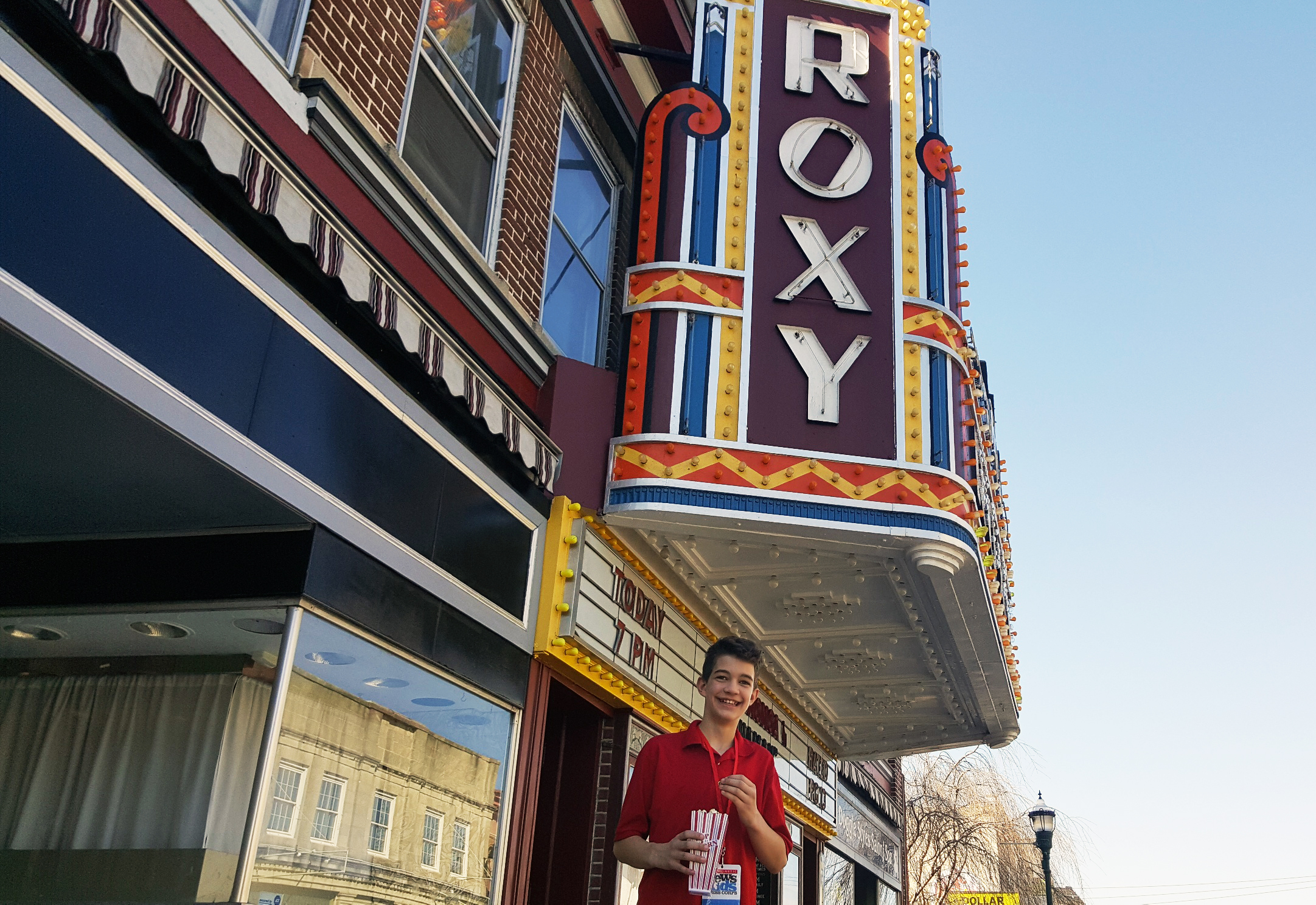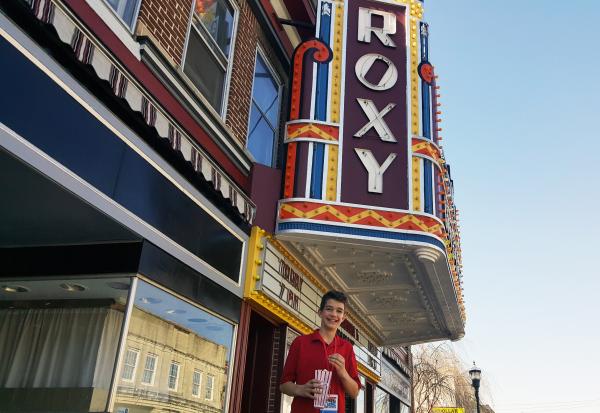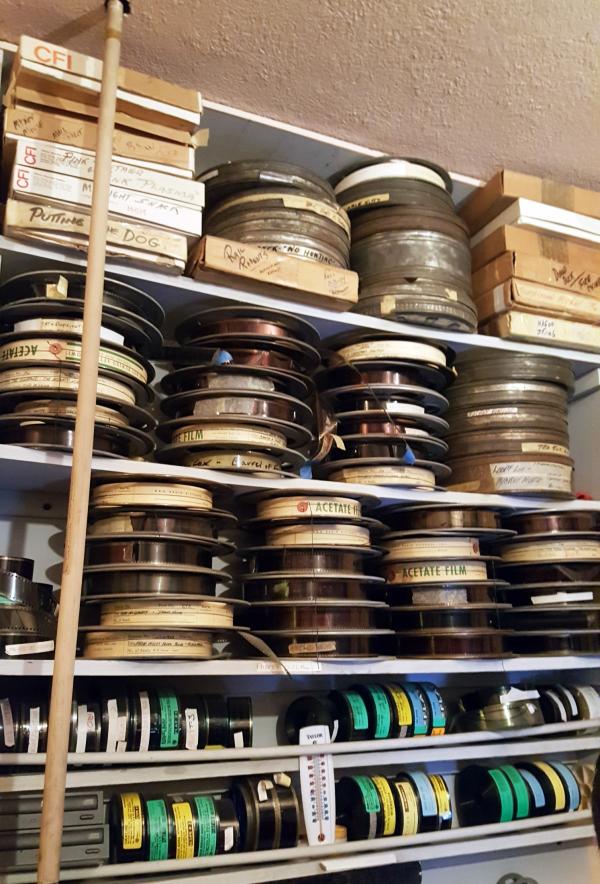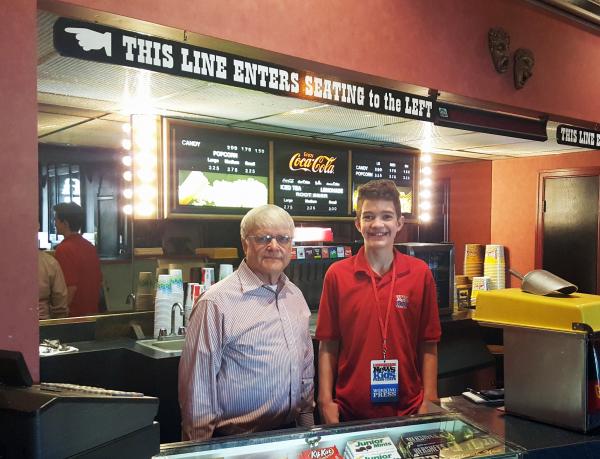KID REPORTERS’ NOTEBOOK
Reel History: A Trip to the Movies


Aiden gets an education in cinema at the Roxy Theatre in Northampton, Pennsylvania. The theater was built in 1921 to showcase vaudeville acts.
Did you ever wonder how movies are shown? Until about 20 years ago, they would arrive at the theater on celluloid strips that had been spun onto reels. Roughly the size of a child’s bicycle wheels, the reels would be attached to a mechanical device which projected the movie onto the big screen.
At the start of the 21st century, digital projectors began to replace film projectors. I recently visited the Roxy Theatre in Northampton, Pennsylvania, to learn more about the differences between film and digital.
Years ago, owner Rick Wolfe explained, movies were shot on 16mm, 35mm, or 70mm film. The larger the width of the film (measured in millimeters), the less the film would have to be enlarged. This made the picture quality much clearer.
“Using 35mm film was easier,” Wolfe said. “All you had to do was switch the two reels in the middle of the movie, and nobody would notice.”
NO SCRATCHES
Digital movies are less cumbersome, arriving on a hard drive that is about the size of a book. They’re plugged into a projector and dragged and dropped into its database. A big advantage of digital films, Wolfe told me, is that they don’t develop scratches or fade over time like celluloid.
“When we first tried our new digital projector,” Wolfe said, “it was so bright that we could see all the holes in our screen. We ended up having to replace the screen.”

Old cartoon reels and movie trailers in storage at the Roxy Theatre. Film historians are now collecting and restoring old films so that they won’t be lost to history.
PRESERVING OLD FILMS
Wolfe and a partner purchased the Roxy in 1970. Wolfe, who bought the theater for himself in 1991, has been showing movies for almost 49 years. The only thing he misses about film, he said, is its versatility. For example, if a trailer announced that a movie would be shown on March 13 and Wolfe wouldn’t be showing it until April, he could just cut that part out and resplice the film.
Many of the old reels at the Roxy are gathering dust. The same thing is happening in theaters around the country. But universities and movie museums are now collecting and restoring old films so that they won’t be lost to history.

Aiden behind the concession stand at the Roxy Theatre with owner Rick Wolfe
PASS THE POPCORN
The best thing about the movie business, Wolfe joked, “is that it makes me a good living.” His favorite films are Young Frankenstein (1974), Citizen Kane (1941), and the original version of The Producers (1967).
As times have changed, so has the way movies are shown in theaters. It doesn’t matter to me whether a movie is shown on film reels or a digital projector. Just don’t forget to pass me the popcorn!
